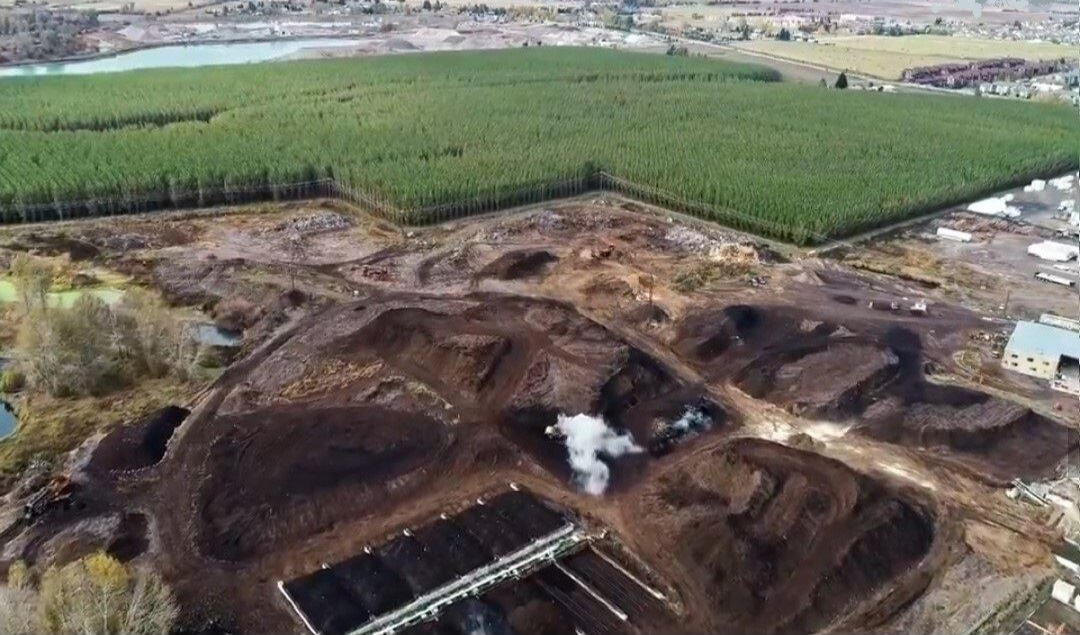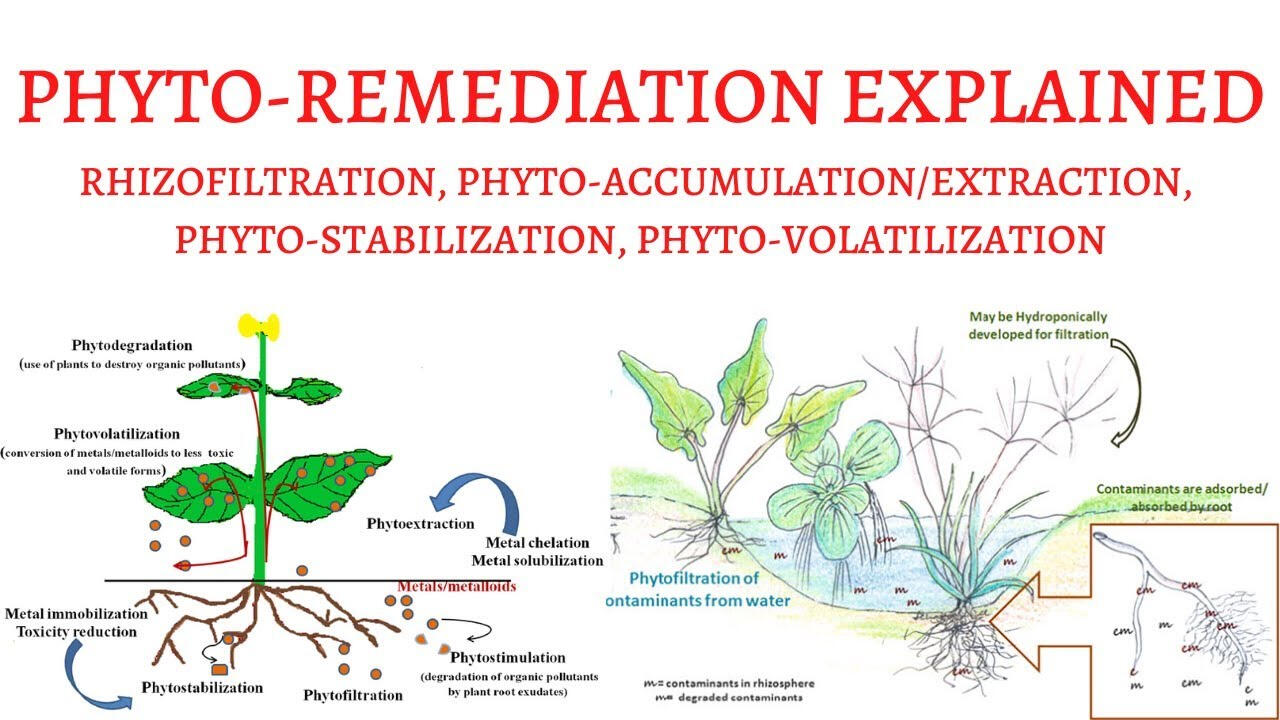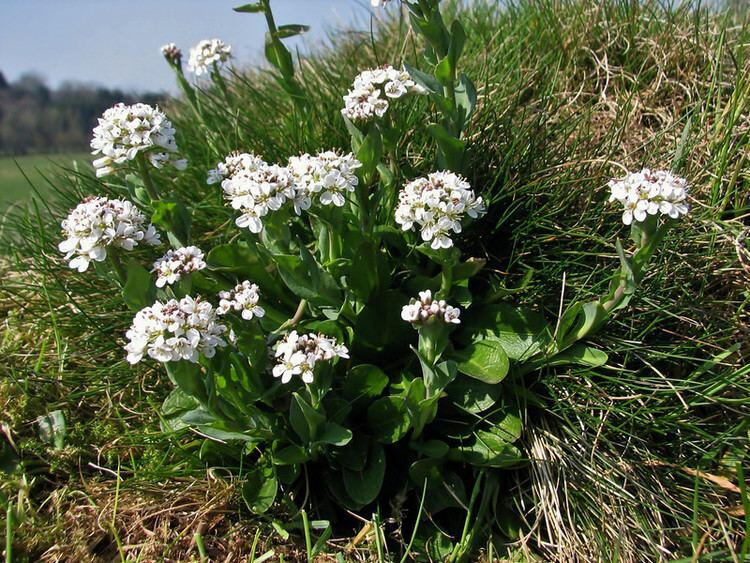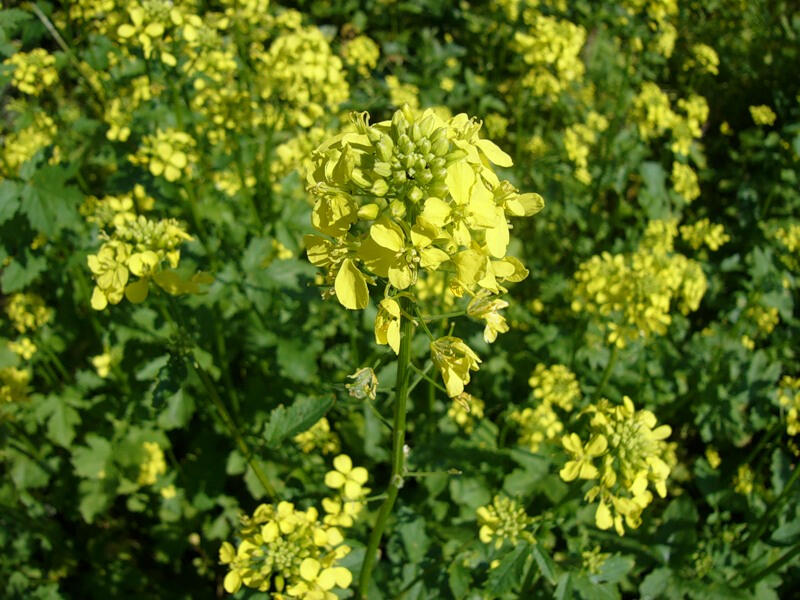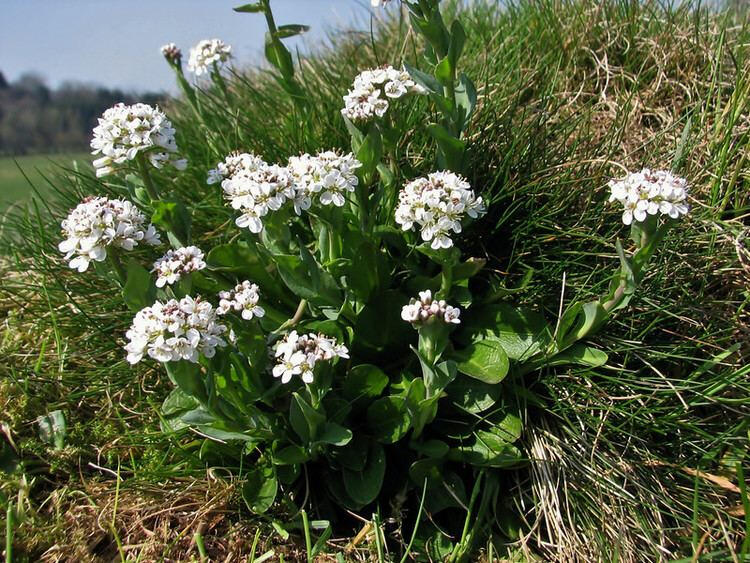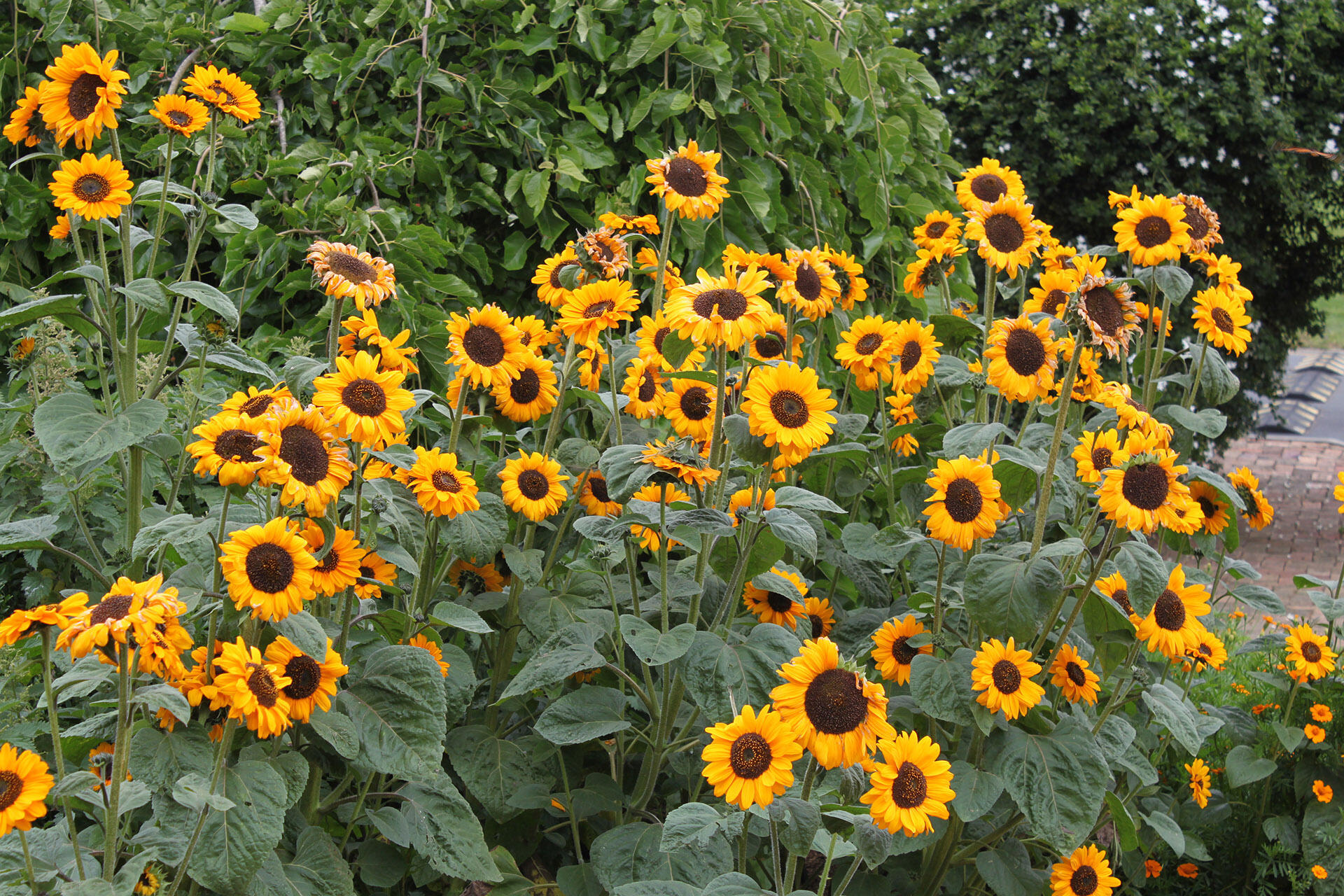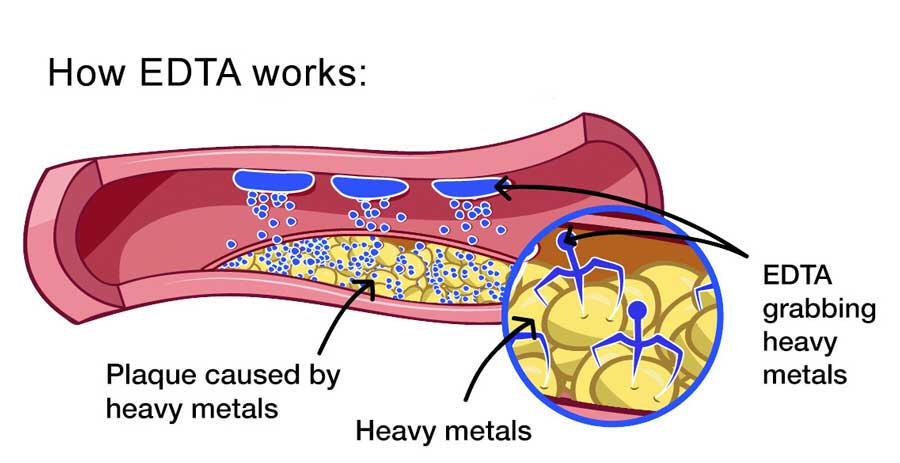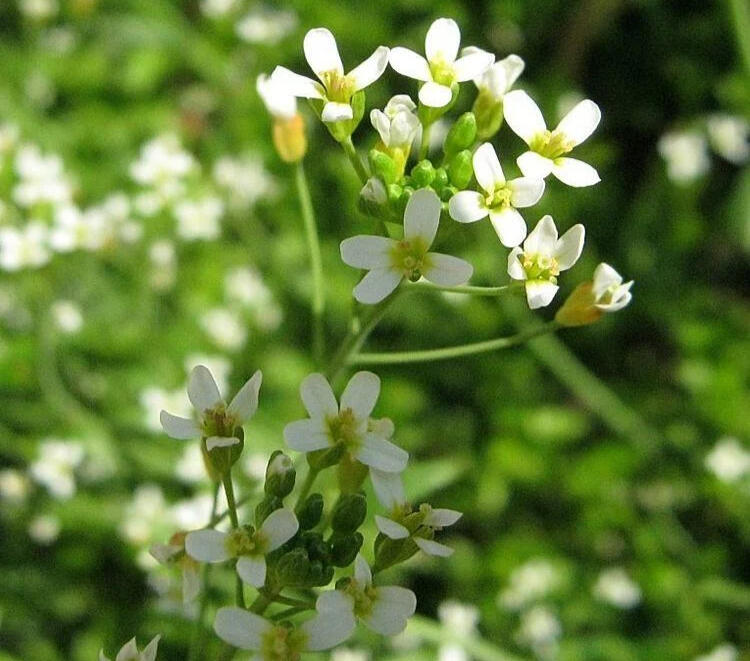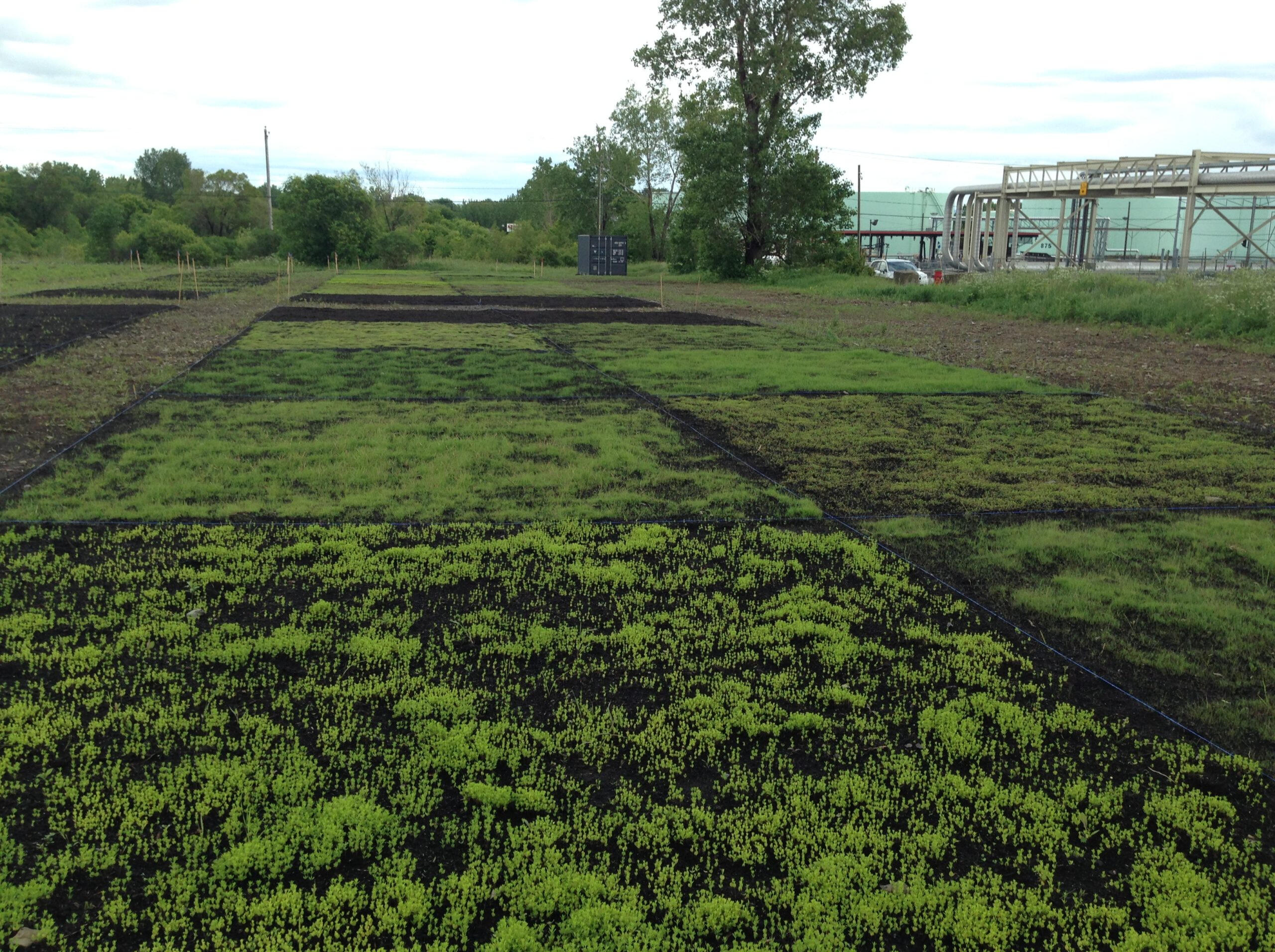Missoula wastewater facility - Hybrid Poplar tree plantings
BLOG
Phytoextraction: Hyperaccumulator species, decontaminants of environments polluted by metallic substances.
Please note: Although this report was written back in 2003, the information, concepts and examples presented, are still very valid today and will assist the reader with providing a basic overview concerning the subject of Phytoremediation. Obviously, information and research into Phytoremediation has evolved over the last 20 years, so I strongly encourage the reader to conduct further research into the matter, in order to get up to date with the latest developments, new methods, successes and failures, in this fascinating area of study.Pierre Duranleau - 2024
1.1. What is Phytoextraction?
Phytoextraction is one of several strategies in a process known as phytoremediation. The main role of phytoremediation is to clean soils, wetlands, and aquatic environments contaminated by organic, inorganic substances, and heavy metals. There are several strategies under the umbrella of phytoremediation, including phytostabilization, rhizofiltration, and biovolatilization, to name a few. 1This document aims to provide a brief overview of the phytoextraction process. Phytoextraction refers to the restoration of environments (e.g. soils, wetlands, and aquatic areas) assisted by plants (e.g. trees, shrubs, herbs) to extract pollutants such as heavy metals. Phytoextraction is a biological process that occurs naturally, as there are examples of certain plant species that survive in harsh conditions (e.g. drought-tolerant and resistant to herbivores and pathogens) where traces of toxic elements are naturally present in the soil or water. 2One of the primary qualities of these plants lies in their ability to accumulate high levels of contaminants through their root systems and transport them to other parts of the plant, such as the vascular system and leaves. 3 Due to this unique natural absorption quality, these types of plants are now recognized as hyperaccumulator species. Laboratory observations have shown that some species can absorb contaminants in their dry weight (e.g. dry mass or DM) at a high exponential rate compared to the dry weight of the species. These contaminants include elements such as cadmium (Cd), cobalt (Co), copper (Cu), manganese (Mn), lead (Pb), zinc (Zn), and even radionuclides such as uranium (U). 4
To quantify this, a phytoextraction coefficient has been developed, expressed as:g (grams) of metal/dry weight (DM) of the roots to g of metal/g (DM) of soil. 5
Phyto-Remediation: Phyto-Accumulation, Phyto-Stabilization & Phyto-Volatilization
One hyperaccumulator species that exemplifies this natural absorption phenomenon is Thlaspi caerulescens (commonly known as Alpine pennycress). Thlaspi caerulescens can absorb elements such as cadmium (Cd), nickel (Ni), lead (Pb), and zinc (Zn) with impressive efficiency, accumulating up to 30,000 ppm (parts per million) of zinc, even storing it in the leaves. 6 According to experts in agronomy and microbiology, Thlaspi caerulescens demonstrates the ability to accumulate zinc at a rate of 125 kg per hectare (kg/ha) annually. For cadmium, if a site is well managed and fertilized, the species can absorb cadmium at a rate of 2 kg/ha per year. If a site is contaminated with zinc, which is often accompanied by cadmium (e.g. 20 to 30 kg/ha), it is conceivable that the entire decontamination process using a plantation (i.e. monoculture) of Thlaspi caerulescens would take approximately 16 years to complete. 7
Thlaspi caerulescens: Hyperaccumulator Species
In such a case, the decontamination process would take a long time, but the overall cost of the operation over this period would be significantly lower compared to other traditional methods of decontamination (e.g. excavation, disposal, composting, and off-site burial of contaminated soil). Phytoextraction becomes even more interesting when considering the ecological and commercial potential associated with recovering elements extracted by these plants. For example, a system could be developed where plants are harvested (e.g. a commercial monoculture), similar to hay harvesting, followed by an incineration process to recover metals, eventually turning them into ash-like substances (i.e. an agro-mining operation). 8This phytoextraction strategy could have significant commercial benefits, especially regarding the reuse of a site after the decontamination operation, potentially for agricultural or commercial purposes.
Notes:1 - For a deeper understanding of the various forms of phytoremediation, please refer to: Introduction to Phytoremediation, U.S. Environmental Protection Agency; Chapter 3, p.14, February 2000:
2 - Ross, Nathalie, Plants for the Extraction of Heavy Metals in Soils, Infrastructures Branché, August 1997, January 7, 2003:
3 - Ross, ibid; et Wendy Gardner, Phytoremediation : abstract, University of Alberta, October 1998, 30
January 2003:
4 - Ross, ibid.
5 - Introduction to Phytoremediation, EPA, op cit. p.14.
6 - Barak, Phillip, Metal scavenging plants to cleanse the soils, Agricultural Research, USDA-ARS
(internet version adapted by the University of Wisconsin-Madison), p.4-9., November 1995, 10 March
2003: http://www.soils.wisc.edu/~barak/soilscience326/agres.htm (note: link no longer available).
7 - Barak, ibid.
8 - Barak, ibid.
1.2. Considerations and Types of Species Used
1.2.1. Considerations
Since the practice of phytoextraction is currently in its early stages, it is difficult to determine the exact or even approximate number of species that could serve as hyperaccumulating plants. Only time and scientific research will allow us to establish a complete and exhaustive list of these species. It is worth noting, however, that since 1999, Environment Canada has compiled a database of over 700 plant species, lichens, algae, and others, all intended for phytoremediation purposes. 9 That being said, there are already several species that have been studied in the laboratory and used in the field.Since this report is limited in space, the focus will be on the most studied, used, and proven species (i.e. popular species) in real-world examples and studied intervention scenarios. Here are some considerations to keep in mind when selecting species:1) It is preferable to choose species that have already been studied and that demonstrate either efficiency or potential efficiency in extracting heavy metal substances. 102) It is advisable to use native species that are better adapted to the local environment where the intervention will take place. 113) In the case of an existing site, the use of the same species already planted can be proposed, based on data results and observations from the site. One can also recommend the use of species that have been successfully used on other sites, preferably sites that share similar characteristics (e.g. types of contaminants, types of soils, climate, area, etc.). 12 In short, it is important to select species that demonstrate adaptability to the environment, conditions, and specific requirements of the phytoextraction strategy where the intervention will take place.In all three cases, there are many documents and resources available, especially via the internet and government services, which can assist those involved in a Phytoremediation intervention.
Notes:9 - Gauthier, Philippe, La décontamination par les plantes, CyberPresse, 5 avril 1995: http://www.cybersciences.com/cyber/3.0/N1180.asp (note: link no longer available).
10 - Introduction to Phytoremediation, EPA, op cit, p.44.
11 - Introduction to Phytoremediation, EPA, ibid.
12 - Introduction to Phytoremediation, EPA, ibid.
1.2.2. Types of Species
Since the inventory of species is notably very extensive, this report offers a short list of the most remarkable and promising heavy metal hyperaccumulator species, followed by a brief description of their important properties:
Brassica juncea (Indian mustard):From the Brassicaceae family and one of the star hyperaccumulators. This high-biomass species is preferred for the extraction of lead but can also accumulate other metals, including cadmium, copper, nickel, and zinc. Among many studied species, Brassica juncea shows a much better capacity to transport, for example, lead to the vascular parts of the plant, accumulating a higher rate of 1.8% lead in dry weight (DW) in the vascular parts, and in some cases up to 10.9% lead in the roots (with variations depending on the different varieties of Brassica and the number of species studied). 13In a study presented to Environment Canada to determine the feasibility of decontamination through phytoextraction at a military base site in Farnham (Québec), Brassica juncea was recognized, based on greenhouse trial results, as having the best lead and copper accumulation capacity. 14 However, although this species tolerates high levels of metals, particularly lead, in the roots and vascular parts, it is less resistant to metallic substances introduced into the leaves. This has a negative effect, as this constraint forces the use of chelates (a very toxic technique), which will require more frequent harvesting, making the strategy potentially less profitable. 15
Brassica juncea - Indian mustard
Thlaspi caerulescens (Alpine pennycress):Also from the Brassicaceae family, known for its ability to accumulate cadmium, lead, and zinc. It has been observed that zinc can even be stored in vacuoles. 16 This species has also demonstrated the ability to accumulate nickel and zinc, ranging from 1% to 5% of its plant biomass, which is significantly higher than the concentration of metals found in non-accumulating (native) plants in the same region or surrounding sites. 17
That being said, there is an important distinction to highlight: even if a hyperaccumulator species shows the ability to absorb metals, it is not necessarily very tolerant of very high levels of these same metallic substances. 18 Despite this natural hyperaccumulation phenomenon associated with these plants, there are still constraints and considerations to note in the case of the Brassicaceae family:1) In general, metals such as copper, nickel, and zinc are not considered the most significant environmental pollutants compared to other substances, except for lead as mentioned in the case of Thlaspi caerulescens.
2) Most of these species typically have lower plant biomass and exhibit unpredictable and unfavorable growth behaviors, a combination that makes monoculture strategies (i.e., intensive commercial cultivation) much less viable.
3) Concrete and proven agronomic techniques and practices, as well as safe cultivation measures, have not yet been significantly developed. 19
Thlaspi caerulescens - Alpine pennycress
Populus trichocarpa x deltoides (Hybrid Poplar):From the Salicaceae family, this hybrid species was created from the white poplar and black poplar. It has been used in several phytoremediation scenarios (e.g. soils and wetlands), including the decontamination of abandoned mines. Certain species of hybrid poplars have demonstrated the ability to accumulate elements such as arsenic (As) and cadmium. 20 According to observations, hybrid poplars absorb arsenic in a manner similar to the way they absorb the natural nutrient phosphate. In the case of cadmium absorption by this species, it behaves similarly to the natural absorption of calcium (Ca) and zinc, all of which are present in varying amounts in the soil naturally (or as soil amendments) and are necessary for the normal growth of this tree. 21
Field studies have shown that arsenic and cadmium cannot be absorbed in large quantities by the leaves. 22 One of the primary advantages of planting species like hybrid poplars is the volume and extent of the tree's root system, which can reach depths of up to 6 or 7 meters. This is a major asset in immobilizing and extracting pollutants from soil levels that other hyperaccumulator species cannot reach. 23
It is even possible to plant trees (approximately 4 meters tall) in pits dug more than 4 meters deep to maximize root reach into deeper soil layers and further increase the accumulation of pollutants. This technique is known as deep rooting. 24 In some cases, a site could benefit from planting trees in large quantities, either in parallel rows or in clusters, creating a massive root network that acts as a gigantic filtration and immobilization system for metallic pollutants.
Despite the interesting and positive properties associated with hybrid poplars, there is still a lack of information regarding the recovery, recycling, and disposal process of the accumulated pollutants. What should be done with these trees once they have absorbed the targeted toxic elements, and what would be the maximum absorption tolerance of these elements without compromising the health of the species? Since most existing phytoremediation projects involving hybrid poplar plantations are in preliminary development stages, it is difficult to obtain precise (i.e. publicly available) data regarding the performance of these species in the field. 25
Populus trichocarpa x deltoides - Hybrid poplar: Using Hybrid Poplar for Phytoremediation
Here is a general overview of other plant species studied, particularly for their potential in intensive cultivation:
Helianthus annuus L. (Sunflower): According to analyses, this plant shows the ability to accumulate radionuclide elements (i.e., simple metals) such as cesium (Cs) in its roots, and even strontium (Sr), the latter of which can be absorbed into the plant's vascular system. 26
Helianthus annuus L - Sun flower
Zea mays (corn), Sorghum (sorghum), and Medicago sativa L. ("alfalfa"): These species are traditionally and commonly used in intensive cultivation. Since these plants have a significantly larger biomass and a faster growth rate compared to other known hyperaccumulator species, they could potentially extract and accumulate a greater mass of polluting metals. However, further research would be needed to quantify the extraction of pollutants and verify this claim. 27
Zea mays - Corn
Notes:13 - Introduction to Phytoremediation, EPA, ibid, p.16.
14 - Biogénie S.D.R.C Inc., Phytorestauration de sol contaminé par le plomb et du cuivre à Farnham,
Québec: presented to the Ministère de l’Environnement du Canada, may 2000, pages 10 et 19.:
15 - Gleba, Dorolessa et al, Use of plants for phytoremediation and molecular farming, presented to the
National Academy of Sciences colloquium, december 1998, 8 april 2003:
16 - Büchi, Lucie et Christin, Pascal-Antoine, Thlaspi caerulescens : une plante métallique lourdement
testée, Université de Lausanne, winter 2002-2003, 10 april 2003:http://www.petzi.ctrlaltdel.ch/thlaspi/content.html (note: link no longer available).
17 - Gleba et al, op cit.
18 - Gleba et al, ibid.
19 - Gleba et al, ibid.
20 - Introduction to Phytoremediation, EPA, op cit, p17.
21 - Introduction to Phytoremediation, EPA, ibid, p.22.
22 - Introduction to Phytoremediation, EPA, ibid.
23 - Introduction to Phytoremediation, EPA, ibid.
24 - Introduction to Phytoremediation, EPA, ibid, p.65.
25 - Introduction to Phytoremediation, EPA, ibid, p.66.
26 - Introduction to Phytoremediation, EPA, ibid, p.28.
27 - Introduction to Phytoremediation, EPA, ibid, p.17.
1.3. Amendments and Chelates
In certain phytoremediation scenarios, the phytoextraction of elements involves the use of soil amendments and fertilizers, such as chelating agents, to promote the absorption and transport of chemical elements, particularly to the upper parts of the plant species. In order to increase the bioavailability of metals for the targeted hyperaccumulator species, laboratory studies and greenhouse trials have revealed the following findings:
EDTA: Chelating agents like Ethylenediaminetetraacetic Acid (EDTA) can increase the solubility of metals present in the surrounding soil (i.e. the rhizosphere), which results in the enhanced accumulation of metallic elements, such as lead, in the tissues of the studied plants. 28 Specifically, in an example where the chelate EDTA was introduced, species absorbed lead concentrations ranging from less than 500 mg/kg to over 10,000 mg/kg in the tissues of the studied plants (e.g. Brassica juncea and Zea mays). 29
EDTA: Chelate Amendment
Citric Acid: It has been observed that chelates can reduce soil pH levels. A lower pH level increases the solubility of metals in the soil while reducing the sorption effect of these metals, creating a more favorable situation for species to access and eventually accumulate metallic elements. 30 In addition to the chelating agent EDTA, citric acid was also studied but yielded less dramatic results compared to EDTA, particularly in the context of extracting lead and copper, due to its instability as a metal chelator compared to EDTA. 31 According to one study, while citric acid performed less effectively than EDTA as a chelating agent, it may nonetheless represent a less expensive option for stakeholders when compared to EDTA. 32
Fertilizers: The addition of standard (commercial) fertilizers, including chemical fertilizers containing nitrogen (N), phosphorus (P), and potassium (K), is used to enhance the plant biomass growth of species. The main goal is to produce hyperaccumulator species that can store the maximum possible volume of metals and other pollutants, thereby maximizing harvest yields. 33
Microorganisms: Another proposed amendment method involves introducing microorganisms into the soil to stimulate the extraction of metals such as iron and manganese. The distribution of microorganisms (e.g. rhizospheric) in the soil could be carried out through an irrigation system and even administered during the initial seeding phase. 34
Microorganisms: Extraction Amendment
Notes:28 - Biogénie S.D.R.C Inc., op cit, p.6.; and Gardner, op cit.
29 - Biogénie S.D.R.C Inc., ibid, pages 6 et 8; and Gardner, ibid.
30 - Biogénie S.D.R.C Inc., ibid, pages 8 et 19.
31 - Biogénie S.D.R.C Inc., ibid, p.10.
32 - For an example of a brief analysis on the timeline of activities related to greenhouse trials, please refer to: Biogénie S.D.R.C Inc., ibid, pages 15 à 18.
33 - Biogénie S.D.R.C Inc., ibid, p.8.
34 - Gardner, op cit.
1.4. Projected Applications: Recovery and Disposal
For several decades now, the global scientific community and the general public, particularly in industrialized countries, have recognized the issues and problems posed by environments and landscapes contaminated by toxic substances. Increasingly, the presence of metals and other undesirable elements in the environment leads to complex problems in environmental management, public health and the economy. Since these types of pollutants can persist for long periods in the soil environment, and traditional remediation methods like excavation, disposal, and landfilling are very costly and complex, phytoremediation is emerging as a natural and more economically viable alternative that cannot be overlooked.
Currently, one of the major challenges in this expanding field lies in the development of methods for recovering and disposing of substances extracted by plants, a crucial mechanism for the development and credibility of phytoextraction. Although a considerable amount of information is available, particularly on species used for phytoextraction, there is a notable lack of publicly accessible material on strategies for recycling, recovery, and disposal. Most of the available materials, especially online, are scattered and lacking in substantial content. That said, it is important to remember that the science of phytoextraction is still in its early stages, and both the scientific community and the public will need to wait for a sufficient quantity and quality of results from studies currently underway in laboratories and field trials. However, here are some current considerations for proposed strategies:
Phytomining: There is discussion of harvesting plants to extract metals, a process that could be termed agro-mining or even Phytomining. 35 The most discussed technique is the incineration of plant biomass to recover the resulting products, including metals, but in a new ash form. According to a description by agronomist Rufus Chaney, one possible scenario would follow a process similar to hay cultivation. Once the species is harvested (e.g. baled) and incinerated, the metallic ash could be traded in a manner similar to iron ore. 36 In one particular case, a harvest of Thlaspi caerulescens produced between 30% and 40% zinc, which could be considered a higher rate than that of high-grade ore. 37 Additionally, the electricity generated by the incineration process itself could potentially lower the operational costs of Phytomining. 38 A key question in this regard, however, is whether the incineration process might produce emissions and by-products that could become an additional source of pollution, posing a risk to public health.
Phytomining and Bioleaching Methods
Composting: There is also discussion of drying and composting methods to isolate metallic substances in order to extract these same elements. 39 However, more detailed information on these two methods is scarce, nonexistent, or undisclosed. Some sources suggest the idea of disposing of or burying the plant biomass (contaminated with metals) after harvest, which would create a situation where metal extraction does not occur, akin to traditional strategies like landfilling. 40 This scenario is generally less favorable, given the primary goal of decontaminating the environment through a phytoextraction solution. In other words, in such a situation, are we simply transferring the problem from contaminated soil to the plants themselves?
Notes:35 Becker, Hank, et Don Comis, Phytoremediation: Using plants to clean up soils, United
States Department of Agriculture – Agricultural Research Service, june 2000, p.7.:
36 Becker, ibid.
37 Becker, ibid.
38 Becker, ibid.
39 Gardner, op cit.
40 Gardner, ibid.
1.5. Appropriate Context: What Are the Criteria for Justifying a Phytoextraction Intervention as a Site Decontamination Strategy?
Before undertaking a site decontamination project, a significant number of technical, financial, and social factors must be considered and evaluated to determine the feasibility of a phytoextraction intervention. Here are the most important factors to keep in mind:
1) Importantly, it must be determined whether there are indicators at the affected site that suggest the potential effectiveness of phytoextraction treatment, considering the pollutants present. Moreover, it is necessary to ensure that the performance results already compiled on the species being considered will be applicable to the restoration of the contaminated site in question. 41
2) The management and protection of plant materials and related infrastructure during the site decontamination period must be considered, particularly during the initial growth phase of the plants. This ensures that the species demonstrate the ability to accumulate and degrade the targeted pollutants. 42
3) It must be assessed whether the phytoextraction strategy can decontaminate the site within the projected timeframe or within an acceptable period. 43
4) In the event of failure of the phytoextraction strategy, an alternative decontamination intervention plan should be put in place from the initial phase. 44
Missoula water treatment phytoremediation project: 20 years after its installation and the tree grove removal phase (end of extraction cycle for the Poplar trees), there is no definitive strategy to dispose of the Poplar trees as originally intended and planned
5) A process of monitoring and supervision of the site throughout all phases of the phytoextraction process must be ensured. This should include physical (i.e., chemical and biological) analyses of the site (e.g. soil sampling and species analysis) and the compilation of studied and analyzed results to monitor and manage the progress of the phytoextraction process. 45
6) Once the phytoextraction strategy has been determined, certain economic factors (in addition to technical factors) must be considered. In this regard, it is recommended to compare the various application costs of a phytoextraction strategy with other more traditional decontamination methods. 46 For example, in a techno-economic study presented by Biogénie S.R.D.C. Inc. for Environment Canada, aimed at restoring a military base site in Farnham (Québec) using phytoextraction, the recommendation was against such an intervention because the operational costs of the studied phytoextraction project were significantly higher than the competitive cost of a traditional decontamination solution. 47
7) Research, verify and become familiar with regulations, laws, information, and programs at various governmental levels concerning the decontamination of affected sites.
8) Consult the public, stakeholders and other concerned parties directly affected by the phytoextraction intervention project to determine whether the project is acceptable from socio-political, economic, environmental or other criteria and perspectives.
Notes:41 - Introduction to Phytoremediation, EPA, ibid, p.7.
42 - Introduction to Phytoremediation, EPA, ibid.
43 - Introduction to Phytoremediation, EPA, ibid.
44 - Introduction to Phytoremediation, EPA, ibid.
45 - Introduction to Phytoremediation, EPA, ibid.
46 - Introduction to Phytoremediation, EPA, ibid.
47 - Biogénie S.D.R.C Inc., op cit, p.26
1.6. Advantages and Disadvantages
Advantages:
- Lower costs compared to traditional decontamination strategies.- A relatively passive strategy using naturally renewable plant materials, thereby reducing the volume of contaminated waste sent to landfills.- Minimal excavation, resulting in a more aesthetic approach.- Potential for recycling the extracted metallic elements.- A decontamination strategy that addresses a wide range of metal elements and even radionuclides.- Minimal environmental disturbances.- Potential for energy recovery through a controlled combustion system during the incineration process of harvested plant material.- Elimination of secondary toxic effects in water and the
atmosphere.- A method accepted by the public and regulatory bodies. 48
Disadvantages:
- Limited choice of plant species.- Generally a long-duration process.- The site must conform to the conditions of the intended restoration technique.- The plant species must be able to survive in difficult soil conditions, including contaminated materials.- The root systems of the species must reach the depth of the soil where pollutants are present.- The intervention should not pose potential health risks to site workers, the human population, and other biological species in the surrounding area.- In general, the site area must allow for the use of agricultural and specialized equipment.- What strategy should be employed after harvesting contaminated plants if there is no suitable or available process for recovering the metallic elements? This type of problem could force stakeholders to reconsider and resort to more traditional methods of storage, disposal and landfilling. 49
Notes:48 - Gardner, op cit; and United Nations Environment Programme : International
Environment technology Centre, Phytoremediation : A cost effective remediation
method, Insight, september 1999, 3 april 2003 : http://maestro.unep.or.jp/etc/Publications/INSIGHT/Sept-99/11.asp (note: link no longer available).49 - Gardner, ibid; et Nathalie Ross, op cit.
2. Transgenic Species
As previously noted, despite the remarkable properties exhibited by hyperaccumulating species, there are certain limitations that reduce the capacity of various plant species to absorb metallic elements. Among the most notable challenges is the ability to not only increase the plant biomass of a species but also to enhance its ability to accumulate and store the largest possible volume of bioavailable metals. Ideally, the ultimate goal would be to create plant species that are highly resistant to the most difficult and demanding conditions, and financially viable: species more resistant to metallic substances and other toxic elements; capable of increased and commercialized harvests; easy to manage and maintain; and safer for humans and other biological species. In short, the list of potential advantages could be even longer.
To ensure the continued success of phytoremediation, we must look toward research, particularly in the field of transgenic research. Currently, according to Rufus Chaney, many researchers are thoroughly examining a number of prototype species that are not yet available, in order to find and isolate the genes responsible for the natural process of metal accumulation. 50 Once these genes are isolated, they could be inserted into species more suitable for high production, thereby creating a new hybrid species capable of extracting a greater volume of metals. 51 Another option to explore involves creating hybrid species more traditionally, by crossbreeding different species; Thlaspi caerulescens is cited as a preferred candidate due to its superior growth capacity compared to other species analyzed. 52 From a collection of Thlaspi currently under study, it may eventually be possible to develop new hybrid species with a genetic lineage of metal hyperaccumulation. 53
Another species of note is Arabidopsis thaliana (common wall cress), from the Brassicaceae family. This species has garnered particular interest because laboratory tests conducted on various mutant Arabidopsis species have revealed a marked tolerance to aluminum (Al) and nickel. The goal is to understand the molecular tolerance mechanism for elements such as aluminum and nickel. For example, with current monoculture crops like barley, which are known to be susceptible to certain elements like aluminum and nickel, the aim would be to create new hybrid species significantly more tolerant to these elements. 54 This line of research could have a significant impact even outside the field of phytoremediation, especially considering the enormous pressures on the current commercial agricultural market to exploit even marginal lands to increase crop yields. 55
Arabidopsis thaliana: transgenic hyperaccumulating species
Other plant candidates under study, particularly for their ability to absorb or even exclude metals such as cadmium, nickel, and zinc, include wheat, corn, and cabbage, to name a few. In short, there is immense potential within transgenic species research, especially in the context of phytoextraction. This potential could have far-reaching consequences in other scientific disciplines, not to mention the secondary effects on the economies of regions impacted by this phenomenon. There also remains the pressing question of potential environmental impacts in all regions involved, particularly where phytoextraction interventions using transgenic plant species are deployed. One of the many questions revolves around the potential issue of a transgenic species spreading beyond a contaminated site: what would be the consequences of such a scenario? This could become the subject of significant research. It is a story to watch closely.
Notes:50 - Barak, op cit.
51 - Barak, ibid.
52 - Barak, ibid.
53 - Barak, ibid.
54 - Becker, op cit, p.9.
55 - Becker, ibid
3. Conclusion
We have explored the concept of phytoextraction, a relatively recent phenomenon within both the scientific community and the field of landscape management, as well as in the public's awareness. This new phenomenon represents significant potential for acquiring technical and scientific knowledge, which could lead to substantial economic opportunities in the decontamination of polluted environments. However, in this embryonic stage of its existence, phytoextraction also raises important questions and considerations, particularly regarding its short-term effectiveness in the field, which could pose risks to its economic viability. Additionally, there are long-term concerns about the use of transgenic species to increase resistance and the absorption of metals, a subject that is already highly controversial in our societies.
This paper has focused on the aspect of phytoextraction that involves species known as hyperaccumulators, which are used to extract metallic pollutants from contaminated soils and wetlands. We sought to define the process of phytoextraction itself (e.g. appropriate context, general properties, advantages, disadvantages, and applications) because it is important to note that each case of contaminated environments requires unique considerations, along with different strategies, techniques, and plant species, depending on the condition and geographic location of the site. Lastly, we took a brief look at the research into creating transgenic species, with the goal of developing hyperaccumulating species that are more effective and resistant to the metallic pollutants present in contaminated environments.
Phytoremediation of Eastern Montreal Industrial sites
Sources
- Introduction to Phytoremediation, U.S Environmental Protection Agency, february 2000:
- Les plantes pour l’extraction des métaux lourds dans les sols, Nathalie Ross, M.Sc, date unknown:
- Metal-Scavenging Plants Cleanse the soil, University of Wisconsin-Madison, november
1996: http://www.soils.wisc.edu/~barak/soilscience326/agres.htm (note: link no longer available).
- Phytoremediation: A Growing Field with Some Concerns, Harvey Black, The Scientist
13(5), 1 march 1999:
- Phytoremediation, Wendy Gardner, University of Alberta, 18 october, 1998:
http://www.rr.ualberta.ca/courses/renr575/phyto.htm (note: link no longer available).
- Phytorestauration de sol contaminé par le plomb et du cuivre à Farnham, Québec:
présenté au Ministère de l’Environnement du Canada, Biogénie S.D.R.C Inc., may 2000 :
http://dsp-psd.communication.gc.ca/Collection/En40-634-2001F.pdf (note: link no longer available).
- Phytoremediation : A cost effective remediation method, United Nations Environment
Programme : International Environment technology Centre, Insight, september 1999, 3
april 2003 : http://maestro.unep.or.jp/etc/Publications/INSIGHT/Sept-99/11.asp (note: link no longer available).
- Phytoremediation: Using plants to clean up soils, Hank Becker and Don Comis, United
States Department of Agriculture – Agricultural Research Service, june 2000:
- Thlaspi caerulescens : une plante métallique lourdement testée, Lucie Büchi and Christin,
Pascal-Antoine, Université de Lausanne, winter 2002-2003, 10 april 2003 :
http://www.petzi.ctrlaltdel.ch/thlaspi/content.html (note: link no longer available).
- Use of plants for phytoremediation and molecular farming, Dorolessa Gleba, et al,
presented at the National Academy of Sciences colloquium, decembre 1998, 8 april 2003:
http://www.biotech-info.net/roots.pdf (note: link no longer available).
Pierre Duranleau
Permaculture, Landscapes & Gardens: Designer, Consultant, Implementer & Practitioner
Pierre Duranleau - Copyright/Tous droits réservés - 2025
